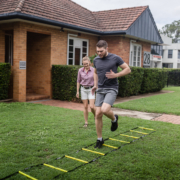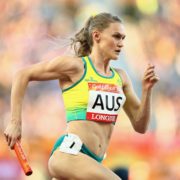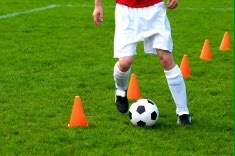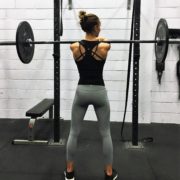Posts
Returning to Sport after Injury
in Case Study Treatment, Physiotherapy ColumnHere at Barefoot, a lot of our clients present to us with an injury they sustained during sport. From dance to yoga and football to power-lifting, there is nothing more frustrating than having an injury prevent you from doing the activity you love. The most common question in returning to sport after injury, is how long should I wait? or get treatment for?
Other questions such as:
- How long until I can get back to running?
- How long until I can compete again/re-join my team?
- If I play will I re-injure myself again?
There are some injuries with healing time-frames which dictate roughly the minimum amount of time an athlete will spend in recovery. For example a bone fracture or a complete rupture of a muscle or ligament will have very specific time-frames (and possibly surgical involvement) which will prevent someone from returning to sport within those first couple weeks…
Over the next few paragraphs we’ll discuss sporting injuries, and the approach we take to them at Barefoot Physiotherapy, and how we determine if an athlete is ready to return to their sport.
The most frequent types of injuries we see in clinic are ligament, muscular and tendon soft tissue injuries – of varying degrees.
The steps we take at Barefoot when aiming to get someone returning to sport after injury (After acute management has been given):
- First and foremost – we need the athlete to have no nerve irritation. An athlete with nerve [neural] irritation stemming from the spine will not recover as fast as one who is neural clear. When nerves are irritated (as shown objectively on our Neural Dynamic Tests) the muscles around them tense up and may spasm to protect the nerve. This reduces movement and places higher forces on joints/structures in the body, consequently taking the body longer to recover. If not cleared fully it also predisposes them to further injury. This is a crucial step.

- Appropriate Ranges of Motion (Ideally throughout the entire body – and definitely equal on both sides of the body). By going through the Barefoot Plan, we will determine areas of the body contributing to reduced ranges of motion, and treat those accordingly until an athlete has full range.
- Full Strength and Proprioception about the affected joints – To regain strength and balance, steps 1 and 2 need to have been addressed. The actual strength gains itself will be developed through a therapeutic, sport specific graded exercise program prescribed by one of Barefoot’s Physios or one of the trainers who we commonly refer to.
- By this point in an athletes rehabilitation, pain should be substantially diminishing, if not completely gone.
- Once steps 1-3 have been accomplished, it is now time to think about actually getting this athlete returning to sport. This is done by starting with the most basic principles of their chosen activity, and working our way up to the most complex/challenging aspects of it. To truly be able to determine if someone is ready for returning to sport at 100% intensity, we recreate their sport specific environment, and assess their performance.
- If the client has any pain, discomfort, imbalance or poor motor patterns during the assessment of their abilities…then they are surely not ready to SAFELY return to sport at this time. See below example for returning to sport for a soccer player
For example, assessing a soccer player’s ability to return to sport would involve:
- Running in a straight line – slow pace, no change in speed no change in direction
- Then in a straight line – medium pace, no change in speed no change in direction
- Followed by running in a straight line – fast pace, no change in speed no change in direction
- Then Zig-zag between pylons – slow pace, no change in speed
- Repeat at moderate to fast speeds
- Finally running backwards, then turning and running in the same direction forwards – slow pace
- Repeat at moderate and full speeds
- Soccer ball skills
- Passing a soccer ball short distance (1m) – inside of the foot
- Repeat at moderate and long distances
- All of step 6 above with a top of the foot pass
- Again all of step 6 with right and left foot
- Dribbling the soccer ball
- Slow pace
- Moderate pace
- Fast pace
- All of the above performed in a straight line, and in varying pylon set ups (zig zags)
- Incorporate an unstable environment:
- Steps 1-5 re-performed without the athlete knowing which way they are going to run
- Example: Athlete running at a moderate pace towards Physio, at the last second Physio will point either right or left and the player has to sprint for 3 seconds in that direction
- Steps 1-5 re-performed without the athlete knowing which way they are going to run
- Combination of steps 1-5 with steps 6 and 7
- Incorporating running with ball control
- Example: get the athlete jogging, not knowing when the Physio will pass her the ball, and when it’s passed, having her pass it back immediately with one touch.
- This can be incredibly variable, and will start slow and steady and progress to full speed drills in an unstable environment, where the athlete has to change their speed, change their direction and perform sport specific (soccer ball) skills, all on one drill.
The Assessment
The assessment above is done in such an order (most basic drills to the most challenging) because we want to know immediately if there are any concerns with the athletes’ injury recovery. Unless all of the above can be performed with no concerns, then we would not be happy to tell somebody that they are ready to be returning to sport.
The above example is a fairly basic one. At Barefoot Physiotherapy, returning to sport assessments are tailored to the individual and their specific position and or role in their chosen activity.
Our Job at Barefoot
Athlete safety and recovery is of the utmost importance, and we are here to support you. As part of your support system, it is our job to take you through the above steps, and make sure you are FULLY RECOVERED before we give you our OKAY to return to your chosen activity. There is nothing worse than being told you are recovered, and going out and re-injuring yourself.
If you have any sport specific questions about rehabilitation, please do not hesitate to ask 🙂
Happy sporting!
What is powerlifting and how can it benefit you?
in Barefoot LifestyleWhen the words ‘powerlifting’ or ‘powerlifters’ come to mind you might think of big burly men pushing stacks of iron and devouring mountains of food. But, as I have found from my own personal experience, this isn’t really the standout feature of powerlifting and certainly isn’t a necessity when incorporating it into your fitness regimen. In this article I will be discussing exactly what powerlifting is, how it compares to other training styles and will point out some of the positives of this style of training in particular.
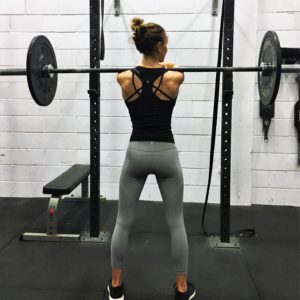
What is powerlifting?
Powerlifting is a sport which focuses on getting as strong as possible in the three primary lifts, also known as ‘the big 3”. The deadlift, squat and bench press. These exercises form the foundation of powerlifting training and the first focus for anyone new to the sport is to learn how to do each movement with appropriate technique. Once the technique has been mastered, then the focus can shift to lifting as much weight as possible whilst maintaining good technique.
Since the goal of powerlifting is to lift as much as possible, powerlifting workouts involve low reps (generally 2-4 repetitions per set) with high percentage of maximal weight and long rest periods between sets (3 minutes or longer).
Bodybuilding, in comparison, uses higher rep ranges (often >8 reps per set) which is better suited to increasing muscle size (hypertrophy) rather than power. This is also very different to the programming found in high intensity interval style (HIIT) gyms that have become popular in recent times. So why would someone like to train this way?
As a novice to powerlifting these are the benefits I’ve enjoyed so far:
- The simplicity: almost the whole body is trained in just three lifts! This also means I can easily remember whether I am ready for another session of either deadlifts, squats, or bench press.
- The functional component: the big 3 lifts each require action of multiple joints and muscles and increases the strength of the entire body. Squatting is essentially getting in and out of a chair, deadlifting is picking something up off the ground and bench press helps with everyday pushing and pulling movements
- Better connection with my body: each training session pushes me to my limits! I have to focus hard to ensure my brain talks to my muscles effectively to get maximum recruitment of all the right muscles for the lift I’m working on. I’ve found that by pushing my nervous system to its limits I am feeling stronger rapidly. This type of strength is known as neuromuscular strength and refers to the brain having improved communication with your muscles. Improved communication with muscles can contribute to Injury prevention
- Powerlifting has a unique way of motivating you that likely stems from its simplicity. Many people will tell you – there is just something really satisfying in seeing the numbers of each lift increasing. I feel motivated to persevere to keep going and increase the weight that I’m able to lift in each exercise.
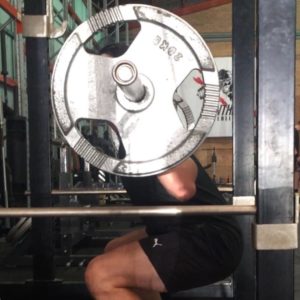 As a final note, make sure that whatever exercise you choose, it is something you enjoy doing. If you are stuck in an exercise rut, then powerlifting might be the right thing to spark your enjoyment and motivation. Make sure you tell your physio if you are starting any new exercise and ensure your body is moving well to avoid injuries. At Barefoot we can develop a plan to get you back to exercise and even ready to try powerlifting if that is your personal goal.
As a final note, make sure that whatever exercise you choose, it is something you enjoy doing. If you are stuck in an exercise rut, then powerlifting might be the right thing to spark your enjoyment and motivation. Make sure you tell your physio if you are starting any new exercise and ensure your body is moving well to avoid injuries. At Barefoot we can develop a plan to get you back to exercise and even ready to try powerlifting if that is your personal goal.
Want to learn more about powerlifiting? Or book an appointment at Barefoot? Click the link here. Physio Alistair

Acknowledgement of Country
Barefoot Physiotherapy proudly operates on Jagera and Turrbul land. We acknowledge Traditional Owners of Country throughout Australia and recognise the continuing connection to lands, waters and communities.
We pay our respect to their Elders past and present and extend that respect to all Aboriginal and Torres Strait Islander peoples today.

